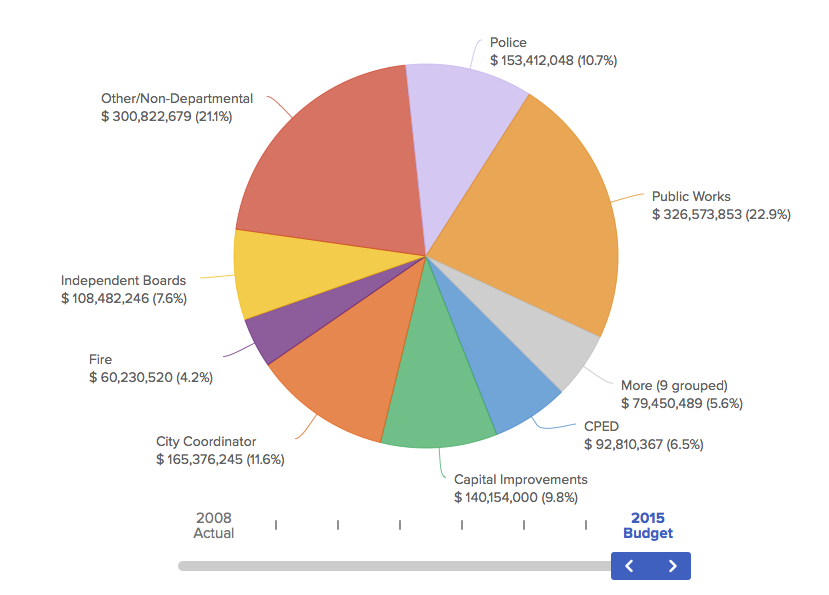Is Open Data in Minneapolis Really Open?

Minneapolis City Hall nikitsin.smugmug.com / Shutterstock.com

Connecting state and local government leaders
Minneapolis released eight years of finances via OpenGov last week, after launching its own portal in December. But some wonder if the efforts are truly transparent.
Minneapolis became the largest Midwestern city to use OpenGov’s financial platform last week, its latest step in a beleaguered push to improve transparency.
With the 2015 budget and eight years of finances on the platform, Minnesota Public Radio already used the simplified interface to dig deeper into Minneapolis’ overtime spending. The amount increased 20 percent to $12 million in 2014 with the city’s police department primarily responsible.
The city was better positioned than most in its move toward greater accountability, launching a standalone open data portal in December containing raw data sets from various municipal departments.
“Today marks a big leap forward in increasing financial transparency in Minneapolis,” Mayor Betsy Hodges said in a statement. “Making this data available online in an easily accessible format will not only result in a more informed public, but will also help city leaders and staff digest complex financial information to help run the city better.”

A pie chart showing how the 2015 budget for Minneapolis is divided is part of the city's open data portal.
Much of the information the city provided in the last three months would’ve previously required a formal request to obtain. Now, residents and reporters can easily graph long-term trends with capital improvement project or police spending via OpenGov.
That’s not to say there isn’t room for improvement.
Some OpenGov users would still like to see Minneapolis provide line-item spending data like Chicago does.
At launch, Minneapolis’ open data portal was one of 46 offered by cities and counties nationwide, according to City Hall, and included crime statistics, liquor licenses and precise city boundaries among other data sets.
Minneapolis’ City Pages reported that some queries crashed and problematic pages were taken offline. The city responded to the publication’s request to speak with its chief information officer, Otto Doll, with a statement:
We are glad that people are so interested in the city's new open data portal. Unfortunately, we are experiencing some bugs with the launch. City staff is currently working with the vendor to get them resolved as quickly as possible.
Data on the website can be downloaded and visualized in charts and maps when possible, and users can choose to be notified by RSS feed when sets are updated.
The portal isn’t comprehensive, “but it is meant to make the most frequently requested and most useful data easily accessible,” according to a Minneapolis news release.
The City Council approved an open data policy last June at the urging of civic hacker group Open Twin Cities. TECHdotMN reported that key language was changed at the last minute, allowing city departments to opt out of adding data to the portal.
“What’s the point of a policy if participation is optional?” Councilman Andrew Johnson asked at the meeting, according to TECHdotMN. “Is an anti-discrimination policy optional? Is it optional for departments to work with HR when hiring? Is it optional to follow procurement policies?”
New contracts from 2015 on will include provisions ensuring “data sets can be made public when appropriate,” according to the city.
Minneapolis joins a growing list of more than 250 governments across 36 states counting themselves OpenGov customers. Cities like Miami and Pittsburgh began using OpenGov’s financial transparency platform earlier this year.
“The city of Minneapolis is setting the standard for transparent government in the Midwest and across the U.S.,” OpenGov CEO Zachary Bookman said in a statement. “It has been a pleasure working with city staff to craft an extremely thorough, detailed platform that demonstrates the city’s commitment to efficient and transparent government.”




